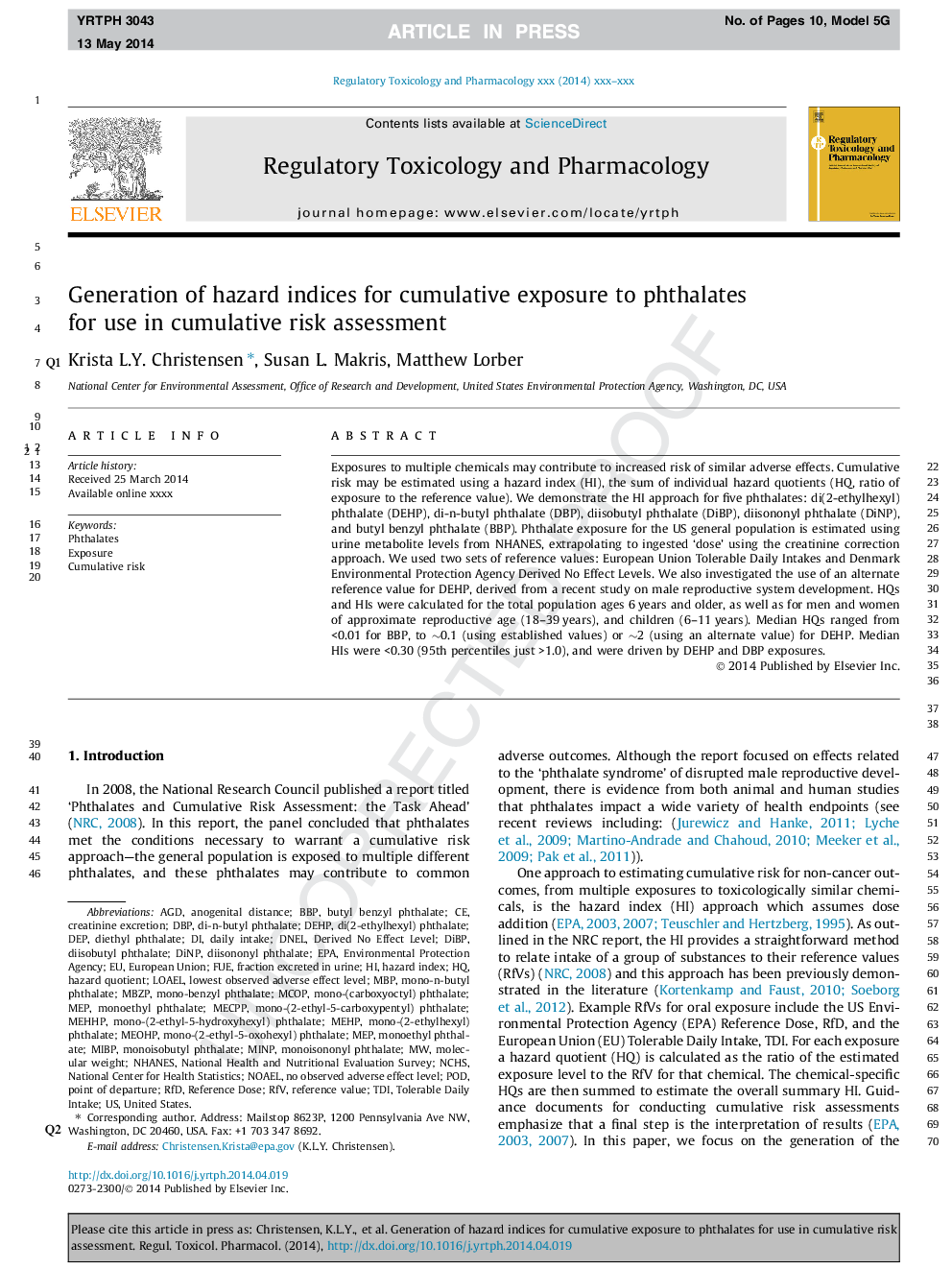| Article ID | Journal | Published Year | Pages | File Type |
|---|---|---|---|---|
| 5857041 | Regulatory Toxicology and Pharmacology | 2014 | 10 Pages |
Abstract
Exposures to multiple chemicals may contribute to increased risk of similar adverse effects. Cumulative risk may be estimated using a hazard index (HI), the sum of individual hazard quotients (HQ, ratio of exposure to the reference value). We demonstrate the HI approach for five phthalates: di(2-ethylhexyl) phthalate (DEHP), di-n-butyl phthalate (DBP), diisobutyl phthalate (DiBP), diisononyl phthalate (DiNP), and butyl benzyl phthalate (BBP). Phthalate exposure for the US general population is estimated using urine metabolite levels from NHANES, extrapolating to ingested 'dose' using the creatinine correction approach. We used two sets of reference values: European Union Tolerable Daily Intakes and Denmark Environmental Protection Agency Derived No Effect Levels. We also investigated the use of an alternate reference value for DEHP, derived from a recent study on male reproductive system development. HQs and HIs were calculated for the total population ages 6Â years and older, as well as for men and women of approximate reproductive age (18-39Â years), and children (6-11Â years). Median HQs ranged from <0.01 for BBP, to â¼0.1 (using established values) or â¼2 (using an alternate value) for DEHP. Median HIs were <0.30 (95th percentiles just >1.0), and were driven by DEHP and DBP exposures.
Keywords
monoisononyl phthalatemono-(2-ethyl-5-carboxypentyl) phthalateEPAdi-n-butyl phthalateRfDTDINHANESMBzPMiBPmono-n-butyl phthalateDNELDEHPNCHSRfVLOAELDIBPNOAELDEPMEPMEHPMBPDBPMiNPMCOPMECPPMEHHPPODMEOHPDiNPmono-(2-ethyl-5-hydroxyhexyl) phthalatemono-(2-ethyl-5-oxohexyl) phthalatemono-(2-ethylhexyl) phthalateEnvironmental Protection AgencyEuropean Unionreference valueUnited StatesFUEMono-benzyl phthalatebutyl benzyl phthalateBBPCumulative riskExposureCreatinine excretionReference dosedi(2-ethylhexyl) phthalateDiethyl phthalatediisobutyl phthalatediisononyl phthalateDerived No Effect LevelHazard quotientHazard indexAnogenital distancePhthalatesNational Center for Health StatisticsDaily intakeTolerable daily intakemonoethyl phthalatePoint of departureNo observed adverse effect levelMolecular weightAGDLowest observed adverse effect level
Related Topics
Life Sciences
Environmental Science
Health, Toxicology and Mutagenesis
Authors
Krista L.Y. Christensen, Susan L. Makris, Matthew Lorber,
